Exploring the Worth of Silver Dollars: Key Years and Coins

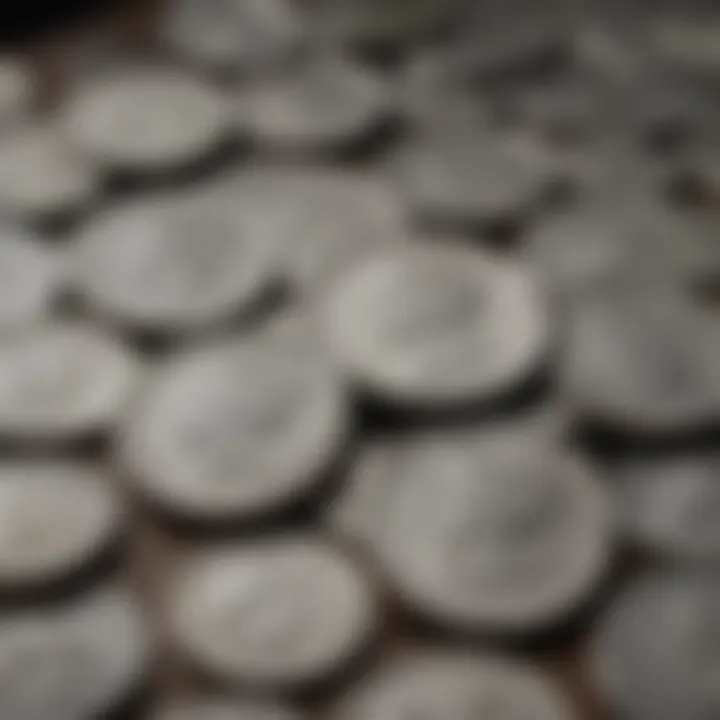
Intro
The world of silver dollars is a fascinating mix of history, art, and investment. These shimmering coins have made their mark across generations, each year adding a new chapter to their legacy. In fact, certain years stand out not just for the coins themselves but for the events and decisions behind their minting. Understanding the tale of silver dollars is essential, particularly for those peering into the collector's market or strategizing their investments.
Learning about valuable years and coins is not just about flipping through the albums of your granddad's collection. It's a deep dive into market trends, the fluctuating appreciation of precious materials like silver, and an appreciation of craftsmanship. As we unearth the significance of different years, collectors and investors alike will arm themselves with knowledge that helps sail the dynamic waters of numismatics.
Let’s embark on an enlightening journey into the heart of silver dollars, beginning with their definitions and the timeless concepts that underpin their value.
Key Terms Explained
Understanding the terms associated with silver dollars not only forms the foundation for collectors but is also vital for savvy investors. Below are fundamental concepts that can bridge the knowledge gap.
Fundamental Concepts
- Minting: The process of creating coins, usually performed by a government mint. Minting methods can vary, affecting the coin's value.
- Numismatics: The study or collection of coins, currency, and related objects. A field rich in history and detail that raises the understanding of what makes a coin valuable.
- Market Trends: Refers to the tendencies and patterns observed in the pricing of silver dollars over time. These trends help investors anticipate future movements in coin values.
Glossary of Investment Terms
- Appreciation: An increase in the value of an asset. In the silver dollar context, this is especially observed during economic shifts.
- Liquidity: The ease with which a coin can be bought or sold in the market. Higher liquidity often equates to greater stability in pricing.
- Premium: The amount by which the price of a silver coin exceeds the intrinsic value of its metal content.
"In numismatics, knowledge is not just power, it's potential profit."
Assessing Valuable Years
Collectors need to be aware that not all silver dollars are created equal. The years of minting can significantly influence a coin's desirability. Understanding which years to focus on can mean the difference between a wise investment and a costly mistake.
Some noteworthy years include:
- 1878: The first year of the Morgan dollar. A hot favorite among collectors due to its availability and historic significance.
- 1893: The key date for many collectors seeking the rarer editions of the Morgan dollar. Few coins were minted that year, increasing value.
- 1921: This year symbolizes the shift between the Morgan and Peace dollars, marking a pivotal time in U.S. coinage history.
As you can see, pinpointing these years is essential, creating pathways for collectors to delve into both financial aspects and historical significance.
In summary, identifying which silver dollars to invest in requires an understanding of historical context and market awareness. As you venture further into the article, expect a thorough dissect of strategies tailored towards maximizing investments while navigating the complexities of the silver dollar market.
Understanding the Allure of Silver Dollars
Silver dollars have always held a special place in the hearts of collectors and investors alike. This allure isn't merely about their physical attributes, but also the rich history and cultural narratives woven into their existence. For enthusiasts, understanding this allure is crucial for grasping why these coins command such high values in collectible markets.
Looking deeper into the historical significance of silver dollars reveals a tapestry of events that shaped economies and societies. They weren’t just mediums for trade; they were symbols of power, independence, and craftsmanship. Notably, the introduction of the Morgan dollar in the late 19th century came at a time when the U.S. was rapidly expanding, embodying a sense of optimism and growth. Meanwhile, the illustration of Lady Liberty on the coins resonates with a collective memory of national identity. In this sense, each silver dollar does more than represent currency; it tells a story of a bygone era.
When it comes to collecting, silver dollars also represent an enticing investment opportunity. Unlike many modern currencies, silver dollars are tangible assets. They are desirable for those seeking a hedge against inflation or economic instability. Their intrinsic value, derived from the silver content itself, adds another layer of appeal—especially in today's fluctuating financial landscape. Thus, collectors and investors alike find themselves drawn to the idea of holding something that not only has history but also potential for increases in financial worth.
Historical Significance
The historical significance of silver dollars goes beyond mere numerics on a currency. The coinage has evolved through various legislative changes, indicating profound shifts in monetary policy and economic realities. One pivotal moment in this evolution occurred with the Coinage Act of 1873, which effectively transitioned the United States from a bimetallic standard to one that focused primarily on a gold standard. This shift impacted the circulation of silver dollars, leading to a decline characterized by scarcity in certain years. In particular, the advent of the Morgan dollar added a layer of complexity to the silver dollar's reputation.
Researching years like 1893 and 1921 unveils a foundation of scarcity that drives later collector interest and market demand. The coins issued during these years are particularly sought after due to their limited availability.
Another key factor is the minting practices. Understanding where and how different coins were minted opens windows into their rarity. Collectors recognize the significance of various mint marks—such as the San Francisco mint denoted by an "S—" which can drastically alter a coin's value based purely on its origin and production volume.
Cultural Impact on Collectors
Silver dollars symbolize more than just currency; they represent a cultural identity. They connect collectors not only with history but also with each other, forming communities around shared passions. Whether it’s through online forums on platforms like Reddit or meetings organized by local coin clubs, individuals often share their findings, stories, and insights. The depth of conversations usually revolves around the unique features of certain coins, the stories behind them, and their significance in the larger context of American history.
Furthermore, cultural narratives around silver dollars often inspire an emotional connection, making them appealing to a broader audience. Stories of discovery in a grandparent's attic or anecdotes shared among friends create bonds that stitch together a rich tapestry of shared experiences, accentuating the preciousness of these coins.
To sum up, understanding the allure of silver dollars intricately intertwines with their historical significance and cultural impact. As more individuals recognize the duality of these coins—both as artifacts of history and valuable financial assets—they continue to solidify their place in the field of collectible investments, appealing to a diverse range of enthusiasts.
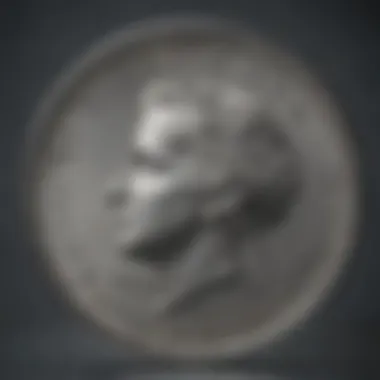
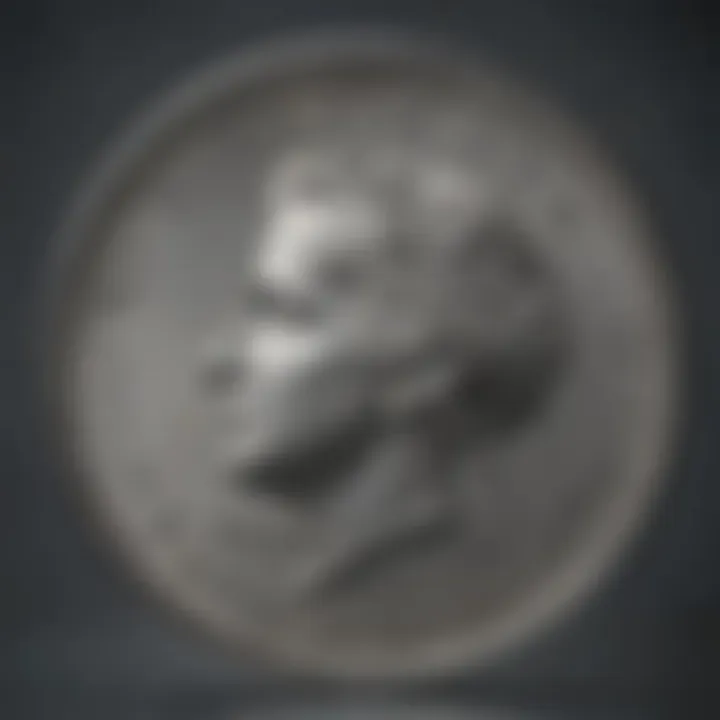
Key Factors Influencing Silver Dollar Value
When diving into the world of silver dollars, it quickly becomes evident that their value doesn't hinge merely on age or curiosity. Several nuanced factors play pivotal roles in determining what these coins can fetch in the market or, for collectors, how much they might be willing to invest. Grasping these elements not only empowers collectors but also serves as a valuable framework for investors looking to include silver dollars in their portfolios.
Mint Mark Variations
The mint mark on a silver dollar serves as a silent yet powerful indicator of rarity and value. Coins bearing the mint mark—usually located on the reverse side—signal where the piece was struck. While many collectors may focus on prominent years, it’s often the subtle differences in mint marks that can tell an entirely different story. For example, an 1880-S Morgan silver dollar's value can vary tremendously depending on the mint mark. A coin without a mint mark or one struck in a location less sought after can be significantly less valuable.
"Mint marks not only tell the tale of origin but also unveil a world of rarity that can transform an otherwise common coin into a prized treasure."
Understanding where a coin was minted can be a game-changer in your collecting journey. The San Francisco Mint, for example, is known for producing silver dollars that are rarer due to limited mintage practices during certain years, affecting their desirability and market value.
Condition and Grading
The condition of a silver dollar dramatically influences its market value. Coins are graded based on their wear and tear, with grading systems designed to evaluate their state meticulously.
Understanding Grading Systems
When it comes to grading systems, familiarity with terms like "MS" (Mint State) or "AU" (About Uncirculated) is crucial. These designations describe a coin's visual quality and preservation. The key characteristic of this system is that it provides a standardized language for collectors and investors alike, ensuring everyone has a common understanding of a coin's condition.
However, these systems can be complex. Grading organizations, such as the Professional Coin Grading Service (PCGS), have established widely accepted standards. Yet, not all coins per grade are equal. Two coins may carry the same grade but can differ greatly based on visual appeal, eye-appeal, and subtle characteristics such as luster and color. Thus, it's essential to recognize that while grading systems are beneficial, they also require a discerning eye.
Effects of Wear and Tear
Over time, even silver dollars can succumb to the wear and tear of circulation. The unique feature of wear and tear lies in its subjective nature; while some marks may go unnoticed, others can significantly diminish a coin's value. A coin that has seen better days—one that might display scratches, tarnishing, or smoothing—can drop from a high market value to a fraction of its former worth.
This leads to an often neglected consideration for collectors: maintaining the condition of coins is paramount. Yet, while the effects of wear can detract from value, enjoying the history and the stories that each coin tells can also coalesce with one's collecting philosophy. So, while a pristine coin might be a more savvy investment, there’s also a richness in the aged appearance that echoes decades of history.
Market Demand Dynamics
Market demand works like the tide—sometimes it’s up, and other times it’s down. This ever-changing landscape can significantly impact the value of silver dollars. Collectability, investor interest, and the economic climate all play their part. For instance, in economic downturns, precious metals often see heightened interest as investors look for safe-haven assets.
Additionally, specific coins may suddenly gain fame through media or auction results, influencing prices sharply. Keeping an ear to the ground regarding market trends, and taking note of how factors outside of minting and condition also influence value, will better position collectors and investors to make informed decisions.
In summary, understanding the influences on silver dollar values—from mint marks to grading systems and market demand—equips collectors and investors not just to appreciate these coins, but to navigate the complexities of the silver dollar market deftly.
The Historical Timeline of Silver Dollars
Understanding the timeline of silver dollars is key to grasping the significance and development of these coins. It provides insights into the minting practices of various eras, helping collectors and investors recognize shifts in value and rarity. Each period tells its own story about preferences in design, methods of production, and public acceptance. Knowing this history not only enriches the collector's experience but also equips investors to make informed decisions regarding their purchases.
Early Years and Minting Practices
The inception of silver dollars in the United States can be traced back to the late 18th century. The Coinage Act of 1792 laid the groundwork for a national mint, leading to the first official production of silver dollars. However, the initial years were fraught with challenges. Minting was a labor-intensive process, characterized by hand-struck coins, which made them prone to imperfections. This lack of uniformity often caused variations in weight and composition.
In the early 1800s, coins were made mostly from Spanish dollars due to their widespread acceptance. Collectors nowadays look back at these early dollars with a sense of nostalgia, as they represent a time when coinage was chaotic yet captivating.
Transition during the Coinage Act of
The Coinage Act of 1873 marked a pivotal point in American numismatic history. This legislation not only refined the minting process but also effectively halted the production of silver dollars for a decade. Initially, it aimed to introduce more consistency in the nation's currency and to respond to the changing economic landscape.
Under this act, the United States transitioned to a gold standard, which contributed to significant upheavals in the value of silver. Coin collectors and investors, especially enthusiasts of silver dollars, now understand how this shift profoundly affected the market and the perceived worth of these coins. It laid the groundwork for some of the most sought-after varieties that emerged when silver dollar minting resumed in the latter part of the century.
The Rise of the Morgan Dollar
Introduced in 1878, the Morgan dollar quickly gained prominence and is now celebrated as one of America’s favorite coins. Its design, created by George T. Morgan, depicted Lady Liberty on the obverse, surrounded by a wreath. This representation resonated with the public, leading to an enduring demand.
The Morgan dollar was minted in vast numbers until 1904 and then again briefly in 1921, which has contributed to a wide variety of mintmarks and condition variations. Most importantly, this period saw the rise of coin collecting as a popular hobby. The Morgan dollar's iconic status solidified its central role in American numismatics, influencing future generations of collectors and shaping the market for silver dollars overall.
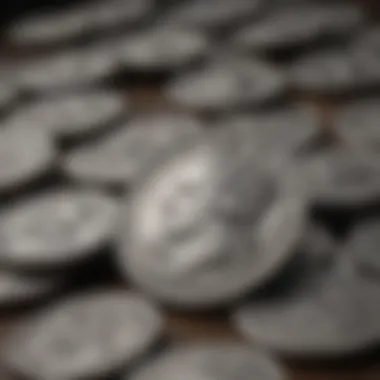
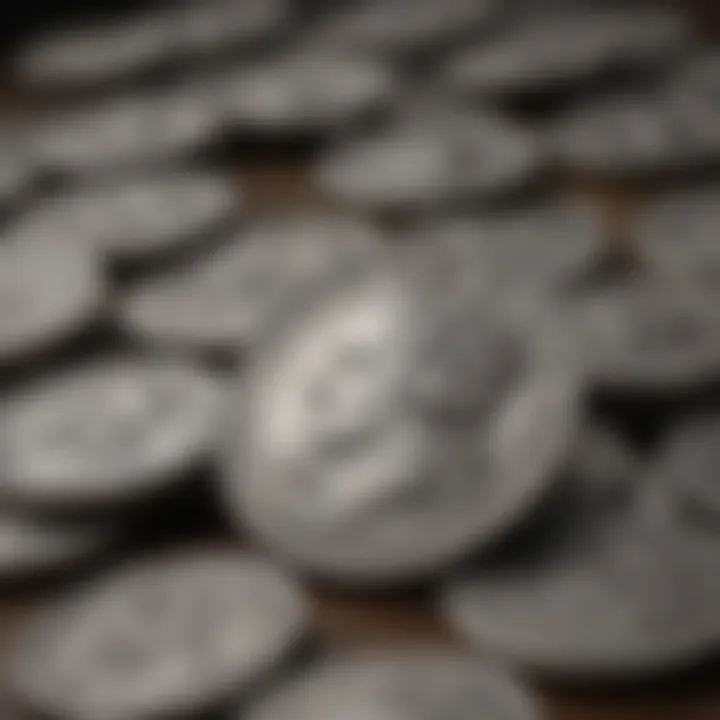
The Peace Dollar Era
Following the conclusion of World War I, the U.S. introduced the Peace dollar in 1921 as a symbol of hope and healing. The design, featuring a representation of Liberty on the obverse and a bold eagle on the reverse, echoed themes of restoration and progress.
This era was characterized by a transition into modern minting practices and featured less production than its predecessor, the Morgan dollar. Collectors today specifically seek out Peace dollars for their aesthetic appeal and historical significance.
The Peace dollars serve as a reminder of a pivotal moment in American history, representing not only a transition in design but also the socio-economic conditions of post-war America. Investing in these coins today often involves recognizing their limited mintages and the lasting legacy they hold in numismatic circles.
"The journey of silver dollars is not just about currency, it's about touching the past through each unique coin that reflects the history of its time."
Thus, understanding the historical timeline of silver dollars illuminates the evolution of these coins, their varying values, and the sociopolitical influences guiding their creation. For collectors and investors alike, this knowledge is invaluable in discerning which pieces carry intrinsic worth, both as monetary investments and as artifacts of American history.
Identifying Valuable Years
When it comes to collecting silver dollars, pinpointing the years that hold the most value is crucial. Each specific year often carries its own unique story and significance, making some coins far more desirable than others. This understanding enhances a collector's ability to not only acquire pieces but also to invest in them wisely. Knowing the valuable years is like having a treasure map—the right knowledge guides collectors toward coins that could appreciate over time or carry significant historical weight. It also prevents collectors from investing in coins that may seem appealing but lack intrinsic worth.
Morgan Silver Dollar Years of Interest
Understanding which Morgan silver dollar years are of particular interest helps collectors focus their searches more effectively. The two standout years—1880-S and 1893-S—serve as prime examples of what to look out for in this series.
1880-S Coin Rarity
The 1880-S Morgan silver dollar is a true gem among collectors. Its rarity stems from a limited mintage, which sets it apart in the world of numismatics. One key characteristic that makes it significant is its clear and vibrant details, which stand out when compared to more common years. Finding an 1880-S coin in better condition can yield hefty returns, as demand always outstrips supply for these particular pieces. The unique feature of this coin is not just its rarity; it also marks a distinct point in minting practices, reflecting the historical transitions of the era.
However, while the potential for profit is notable, collectors should also be aware of the challenges associated with acquiring these coins. Maintaining their condition—since even minor wear reduces value—becomes essential. The stakes are higher with the 1880-S, so knowledgeable buyers should carefully assess the market before jumping in.
1893-S Mintmark Significance
Shifting focus to the 1893-S mintmark, this particular coin also stands out due to its limited production. The significance of the mintmark lies in its direct impact on valuation. Collectors view the 1893-S as one of the key coins to own when looking to build a comprehensive Morgan silver dollar collection. With only a mere fraction of these coins surviving in pristine condition, their value continues to soar.
This coin is not just a piece of currency; it's a historical artifact that carries stories of its time. The unique feature of the 1893-S is the combination of rarity with historical appeal, tying it intrinsically to events surrounding the Panic of 1893. Consequently, understanding its backstory adds layers to its collectible value. Nevertheless, caution is advised; potential investors should ensure authenticity when purchasing, as counterfeits abound in the market.
Peace Silver Dollar Notables
Transitioning from Morgans to the Peace silver dollar series offers another avenue for collectors. Two key years stand out—1921 and 1934-S—each deserving of attention.
High Demand
The demand for the 1921 Peace dollar skyrocketed due to its historical relevance. Minted at the end of World War I, the 1921 symbolized peace and new beginnings. Its design captures an artistic vision of the time, making it particularly appealing to collectors and historians alike. The high demand stems from both collectors looking to complete sets and individuals drawn to the rich history encapsulated within this coin. Its intricate details and the message of hope it represents contribute to its desirability.
However, while the 1921 is easy on the eye, it can also be somewhat common in some grades, meaning collectors need to focus on condition and rarity for an optimal investment. Coins in uncirculated grades often fetch much more, making them a wise choice for serious investors.
1934-S Limited Mintage
Lastly, the 1934-S Peace dollar epitomizes limited mintage's power in the coin market. This year was marked by significantly lower production, making the 1934-S rare compared to its peers. The distinct feature of this coin is the combination of a well-rounded design and notable scarcity production, leading enthusiasts to continually seek it out. The collector's market views the 1934-S as a hallmark of significance due to this rarity.
Acquiring a 1934-S can be a double-edged sword; it's a coveted piece but often comes with a hefty price tag due to its limited availability. This interplay of value and scarcity should encourage potential investors to stay informed and ready to seize opportunities in a competitive market.
"Understanding the unique history behind specific years helps collectors not just to buy, but to invest wisely in their passions."
Ensuring a meticulous approach towards identifying valuable years can transform a simple collection into a treasure trove of financial opportunity. With detailed knowledge and keen observation, collectors can enhance their collections while also positioning themselves effectively for future financial gains.
Recognizing Authenticity: Counterfeit Awareness
In the world of silver dollar collecting, recognizing authenticity is paramount. The market is rife with counterfeits, making it crucial for collectors and investors to hone their skills in distinguishing genuine coins from imitations. Understanding how to identify authentic silver dollars can not only save one from making costly mistakes but also enhance the overall enjoyment of the collecting experience. The significance of this knowledge cannot be overstated: it guards against financial losses and bolsters confidence in one's collection.
Common Counterfeit Techniques
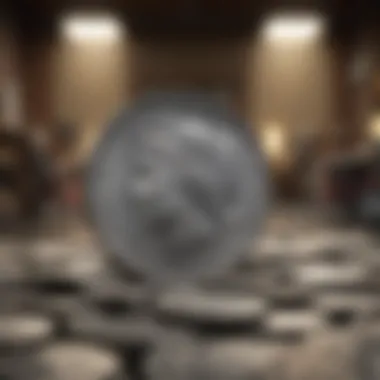

Counterfeiters have employed a variety of techniques over the years to mimic the sought-after silver dollar. Here are some prevalent methods:
- Striking Techniques: Many counterfeits are created by striking softer metals with dies meant for silver. While these may look like silver dollars, they often lack the correct weight and density.
- Alteration of Genuine Coins: Some counterfeiters take genuine coins and alter them—re-chipping or re-engraving them to appear more valuable than they truly are.
- Machining and Casting: Using methods like machining or casting, forgers can create near-exact replicas, including weight and dimensions. However, subtle flaws often exist which can tell a discerning eye that they are not genuine.
- Use of Incorrect Metal Composition: Authentic silver dollars have a specific silver content. Counterfeit coins may utilize different metals that do not hold the same value or properties.
It's essential for collectors to be vigilant and well-informed about these methods. Collaborating with reputable dealers or bringing a coin for professional grading can often alleviate any concerns regarding authenticity.
Identifying Genuine Silver Content
For collectors, understanding how to identify genuine silver content is equally vital. Here are some strategies that can help:
- Magnet Test: Silver is not magnetic. If a coin sticks to a magnet, it’s a clear sign it’s not made from silver.
- Weight Check: Knowing the standard weight of a specific silver dollar can help. For instance, a genuine Morgan silver dollar should weigh around 26.73 grams. Weighing the coin and comparing it to the standard can reveal discrepancies.
- Visual Inspection: Look closely at the coin’s details. Authentic silver coins often have sharper details than their counterfeit counterparts. The finish on a genuine coin is also usually more refined.
- Acid Test: This test requires the use of acid that can help determine the coin's composition. Always proceed with caution if you opt for this method, as it may damage the coin.
“Knowledge is the best defense against counterfeits.”
As we advance further into the realm of silver dollar collecting, being well-acquainted with counterfeit awareness provides a solid foundation. Not only does it protect one’s investments, but it also fosters a deeper appreciation for the genuine craftsmanship and history represented by each coin.
Investing in Silver Dollars: A Financial Perspective
Investing in silver dollars has become an increasingly appealing option for those looking to diversify their portfolios beyond traditional stocks and bonds. The allure comes not only from the historical significance of these coins but also from their potential for monetary appreciation. When it comes to inflationary periods or market downturns, tangible assets like silver dollars provide a buffer against economic instability—a concept that many savvy investors keep in their back pockets.
Silver dollars, particularly certain years and varieties, can offer higher returns due to their rarity and demand among collectors. However, investing in these coins isn’t just about buying low and selling high. It requires understanding the market dynamics, assessing the condition of the coins, and recognizing how broader market trends can impact value.
Market Trends and Value Fluctuations
The world of silver dollar investing is not static; it is subject to the ebb and flow of market forces. Historically, the prices of precious metals fluctuate due to multiple factors, including geopolitical stability, currency strength, and shifts in investor sentiment. For silver dollars, the value can also vary significantly based on collector interest and rarity.
When examining market trends, investors should keep an eye on reports from reputable sources, such as the Numismatic News or financial sections of platforms like Britannica. These resources often provide insights into upcoming trends in the coin market, which can guide your investment strategies.
- Usage Stats: Statistically speaking, the value of silver dollars tends to rise in times of economic uncertainty.
- Investment Patterns: Keeping track of auction results or sales data can also showcase which specific coins are trending upward.
- Demand vs. Supply: The balance of collector interest—especially in historical varieties—can yield substantial profit margins.
Investment in silver dollars offers both tangible assets and a fascinating glimpse into history—a dual benefit that many investors appreciate.
Portfolio Diversification with Silver Dollars
Embracing silver dollars as part of a diversified portfolio is a decision grounded in prudent financial strategy. Diversification means not putting all your eggs in one basket, and silver dollars can play a unique role in this equation.
When considering silver dollars for your investment portfolio, here are a few aspects to keep in mind:
- Historical Value: Coins like the Morgan or Peace dollars can appreciate over time, sometimes outpacing traditional market assets.
- Low Correlation: Typically, precious metals don’t correlate directly with stock markets. This means they can act as a stabilizing force when equities take a hit.
- Liquidity Considerations: While silver dollars can be easier to sell than many collectibles, having a clear understanding of local buyers or auctions can enhance liquidity.
Investing in silver dollars should be approached carefully. Understanding the nuances of the market, such as which years offer potential gains, can set one apart from casual investors. Additionally, being aware of key characteristics that contribute to value—like grading and mint marks—will enhance your overall investment strategy.
"In a world of ever-changing financial landscapes, silver dollars provide a bridge between the past and future."
Ultimately, engaging in silver dollar investing brings together historical appreciation and strategic financial planning. And for those ready to navigate this world, the rewards can be both financially and intellectually satisfying, aligning with the goals of a discerning investor.
The Future of Silver Dollar Collecting
As we look ahead in time, the future of silver dollar collecting presents a fascinating convergence of tradition and modernity. Collecting isn’t just about amassing coins – it’s about preserving history and celebrating a part of our cultural heritage. Silver dollars symbolize a unique blend of art, history, and economics. Interest in these coins has shown fluctuations over the years, but certain underlying factors suggest that silver dollars will continue to hold their place in the hearts of collectors and investors alike.
With emerging generations showing increased interest in tangible assets, silve dollars remain an attractive option—not just for investment but also for the rich narratives each coin tells. The connection to historical moments, like the transition to the Morgan or Peace dollar, makes these pieces not merely currency, but artifacts of significance.
Emerging Collectors and Trends
The demographic landscape of collectors is changing. Young enthusiasts are stepping into the fray, drawn by a mix of historical curiosity and investment potential. Many of them are not just aiming to complete a collection for nostalgia's sake; they are more pragmatic—viewing silver dollars as a hedge against inflation.
- Social Media Influence: Platforms like Reddit and Facebook have created communities where knowledge sharing is rampant. New collectors can quickly catch up on market trends and suggestions on valuable coins to watch for.
- Diverse Interests: Many of today’s collectors are gravitating towards specific themes or limited editions. Coins that signify unique historical events or commemorate significant anniversaries, such as the centennial of silver dollar minting, are particularly appealing.
- Educational Resources: Online resources and forums are plentiful, leading to a more informed collector. These tools equip newcomers with insights into grading standards, mint marks, and valuation, fostering a smarter collecting environment.
Technological Impact on Collecting Practices
Emerging technologies are playing a central role in shaping the future of silver dollar collecting. As everything moves into the digital realm, so has the way collectors acquire, assess, and sell their coins.
- Blockchain and Verification: Ensuring the authenticity of coins has historically been a complex endeavor. Now, with blockchain technology, the provenance of a silver dollar can be securely recorded. This demystifies the process and provides confidence to buyers regarding authenticity.
- Online Auctions: Digital marketplaces are sprouting up, making it easier than ever to buy and sell coins globally. Websites and platforms hosting these auctions allow collectors to reach a broader audience and access rare pieces that may not be available locally.
- Augmented Reality (AR): Some innovative companies are experimenting with AR to give potential buyers a real feel for a coin before they make a purchase. This technology allows collectors to visualize coins in 3D, enhancing the purchasing experience.
In summary, the future of silver dollar collecting is vibrant with opportunities. The blending of technology with traditional practices not only revitalizes interest but also lays a foundation for future generations to appreciate these historical coins. As more people recognize the value of collecting, silver dollars are likely to remain a staple in the world of numismatics.















